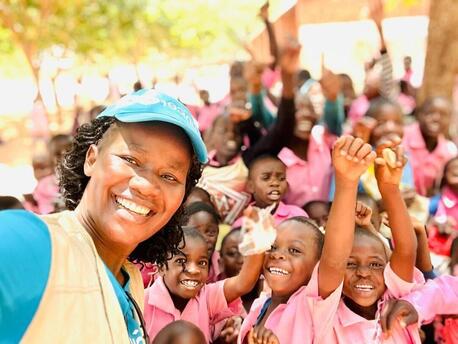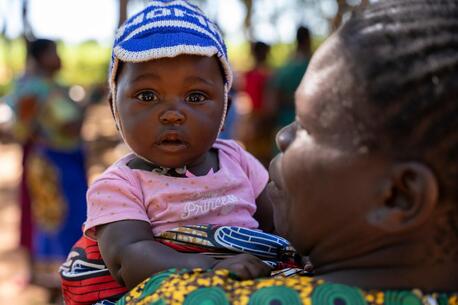
Domestic Violence and Human Trafficking
If you or someone you know is in an unhealthy or abusive relationship, you are not alone. Please contact the National Domestic Violence Hotline at 1-800-799-SAFE (7233) or TTY 1−800−787−3224 for support. Resources are available in Spanish and for those that are deaf, deaf-blind, or hard of hearing. If you are in immediate danger, contact 911.
Human trafficking takes on a variety of forms, and may intersect with domestic violence in multiple ways. For example, when an individual is trafficked by an intimate partner, family member, or other member of the household, domestic violence often also occurs. Additionally, domestic violence at home may become a 'push factor' that causes someone to become vulnerable to trafficking. Even their definitions have similarities (bolded below), including overlapping forms of experienced violence and abuse.
Defining Human Trafficking v. Domestic Violence
Human trafficking is defined using an "A-M-P Model," meaning that it is the:
Act of recruiting, transporting, transferring, harboring or receiving a person;
Through the means of threat or use of force, coercion, abduction, fraud, deception, abuse of power or vulnerability, or giving payments or benefits to a person in control of another individual;
For the purpose of exploitation, including sexual exploitation, forced labor, or other forms of involuntary servitude.
The Department of Justice defines domestic violence as:
"a pattern of abusive behavior in any relationship that is used by one partner to gain or maintain power and control over another intimate partner. Domestic violence can be physical, sexual, emotional, economic, or psychological actions or threats of actions that influence another person. This includes any behaviors that intimidate, manipulate, humiliate, isolate, frighten, terrorize, coerce, threaten, blame, hurt, injure, or wound someone."

The Polaris Project Human Trafficking Power and Control Wheel is adapted from the Domestic Abuse Intervention Project's Duluth Model Power and Control Wheel. Visita aquí para ver “Rueda de poder y control de trata de personas" en español.
The Polaris Projects' “Human Trafficking Power and Control Wheel” (above) depicts the methods employed by a trafficker to maintain influence over a victim. This model was adapted from research on domestic violence and highlights shared experiences of domestic violence and trafficking survivors. When a trafficker is exploiting an intimate partner or family member, the familial relationship itself may be used to perpetuate an exploitative power imbalance. Sex traffickers may also utilize language that mimics familial relationships, such as insisting that a victim refers to him as ‘Daddy’ or other individuals he is exploiting as the victim's ‘family.’ Use of this language is meant to reinforce loyalty and strengthen the psychological ties between a trafficker and victim. When paired with other forms of or threats of abuse, leaving an exploitative situation becomes incredibly difficult.
In addition to shared experiences of abuse and manipulation, domestic violence is a demonstrated 'push factor,' making individuals vulnerable to trafficking. The 2009 U.S. State Department Trafficking in Persons Report cited a London-based study, which found that almost 70% of adult female trafficking victims experienced domestic violence prior to being trafficked. Children exposed to domestic violence in the home may run away in order to avoid abuse; research indicates that runaway and homeless youth are at particular risk of being trafficked, with the National Center for Missing Exploited Children showing that one in six of reported runaways indicated signs of experiencing sex trafficking.
In the United States alone, approximately 12 million people will experience intimate partner violence this year. Abusive power dynamics are often further exacerbated in cases of child marriage. According to the International Labour Organization, forced marriages have already placed over 5.5 million children—the majority of them girls—at increased risk of experiencing forced labor, sexual abuse, and all forms of domestic violence. Regardless of age, identifying trafficking in the context of a married relationship is often difficult due to cultural norms surrounding domestic duties and gender roles. These social assumptions may mask the presence of trafficking, especially forced labor, within married couples.
Understanding the intersection between domestic violence and trafficking is extremely important for raising awareness of the realities of what survivors and victims face. Additionally, recognizing the interconnected nature of these phenomena may allow service providers to better support survivors who may have been subjected to both domestic violence and trafficking. Both of these issues are complex, but there are things you can do to support domestic violence and human trafficking survivors and victims:
- Child marriage is still legal in all 50 U.S. states. Tell your representative that you believe children are children and not brides.
- Review the signs of domestic violence and human trafficking. Which are the same and which are different?
- Work in an organization that provides support and services to survivors of domestic violence? Learn how the needs of human trafficking survivors may differ so that you can best support them.
Note: Much of this article has been drawn and adapted from the presentation, "Human Trafficking: Intersections with Domestic Violence," by the National Human Trafficking Resource Center (NHTRC).
HOW TO HELP
There are many ways to make a difference
War, famine, poverty, natural disasters — threats to the world's children keep coming. But UNICEF won't stop working to keep children healthy and safe.
UNICEF works in over 190 countries and territories — more places than any other children's organization. UNICEF has the world's largest humanitarian warehouse and, when disaster strikes, can get supplies almost anywhere within 72 hours. Constantly innovating, always advocating for a better world for children, UNICEF works to ensure that every child can grow up healthy, educated, protected and respected.
Would you like to help give all children the opportunity to reach their full potential? There are many ways to get involved.





